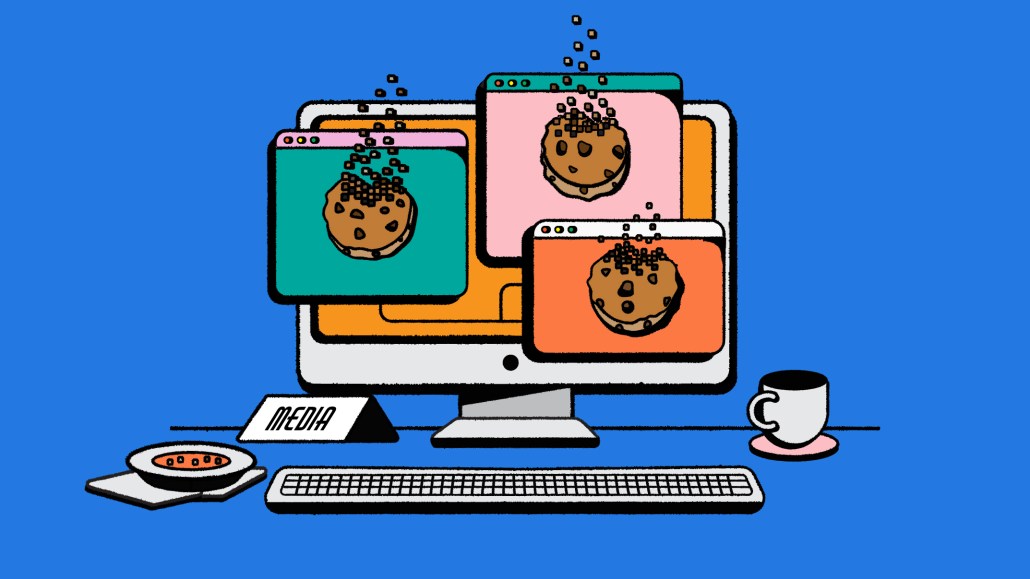Save 50% on a 3-month Digiday+ membership. Ends Dec 5.
Vendors jostle for position ahead of coming contextual pivot

The media and marketing ecosystems presume advertising budgets are going to swing back toward contextual targeting. No one knows quite how much, but the players have already begun jockeying for position.
Contextual targeting solutions, rarely the focus of past vendor pitches, are becoming pervasive, clogging up the diaries and inboxes of media buyers and publishers alike, buy- and sell-side sources said.
Marketers, looking to preserve the always-on ad buying systems they spent years refining, are trying to find contextual stand-ins for some of the audiences and behavioral cues that power some of those structures.
But even with all this foundation being laid, it’s hard to say how much bigger contextual targeting will become once third-party cookies are phased out. The contextual targeting world still doesn’t have a universally agreed-upon taxonomy that would enable buyers and sellers to pair up seamlessly. Marketers, while starting to test to find ways to replicate the journeys, haven’t finished doing it yet.
And even if the swing back happens, publishers are still dealing with a buy-side that has been conditioned to find efficiency and cost savings in digital media, whatever the currency being used to transact.
“Marketers — and agencies — will continue to seek efficiencies,” said Deva Bronson, evp of digital investment at Dentsu. “We’ve all trained ourselves to expect those prices. Nobody’s going to go pay a $27 CPM. Not after we’ve all gotten used to paying $15.”
Contextual targeting used to be the bread and butter of advertising, but it fell out of favor as platforms, data providers and technology companies began preaching the gospel of audience- and individual-based targeting, most of it done using third-party cookies.
Ad position: web_incontent_pos1
Yet with audience targeting poised to be shaken up considerably, advertisers expect the targeting pendulum to swing back the other way, at least partly: A poll of 146 buy-side professionals Digiday Research conducted earlier this year found that slightly more than half of respondents were spending more money on contextual targeting to prepare for the end of third-party cookies, which are the backbone of most audience targeting.
That has attracted new interest. In addition to solutions offered by incumbents such as Comscore, Peer39 and the Oracle-owned Grapeshot, a number of newcomers, such as DoubleVerify and Integral Ad Science, are sweeping in with their own kinds of contextual tools. After years of having just three major solutions, another half dozen have materialized in just the past year, said Max Jaffe, global managing partner of programmatic at GroupM.
The inbound interest, to some publishers, has started to feel overwhelming. “I cannot physically, emotionally respond to them,” one chief revenue officer said of all the inbound pitches from vendors offering contextual tools. “I literally just hit delete.”
In addition to the distraction that these pitches create, they also represent an aggravating reminder that, as they begin filtering in, most of the money spent in this way will be going into open exchanges, rather than with publishers directly. While publishers who wall coveted audience segments off in private marketplaces can still pique advertisers’ interest, “automated and programmatic platforms will get a disproportionate share of contextual,” said Joshua Lowcock, chief digital and global brand safety officer at UM.
Over time, as more advertisers reacquaint themselves with contextual targeting, some publishers should be able to create reasons to buy direct by layering on first-party data of their own. While both a publisher and a vendor can tell a buyer that 1 million people are looking at an article about remodeling a kitchen, for example, a publisher with the right infrastructure can tell the buyer if 200,000 of those people recently also looked at an article about renovating a basement or a bathroom.
Ad position: web_incontent_pos2
That added layer of information might make those readers more receptive to a specific kind of ad creative, or perhaps even attractive to another kind of advertiser altogether. “The value proposition of what publishers can do has increased,” Jaffe said. “There is an advantage for publishers who are leaning into them as a foundational piece of their tech stack.”
Over time, the challenge will lay in which kinds of those segments publishers want to make available, and how they make advertisers aware that they exist. “It won’t be a question of direct or programmatic,” Molly Schultz, svp and group partner of integrated investment at UM, said of how contextual ad budgets will be spent. “It’ll be a question of access.”
An earlier version of this story incorrectly listed Grapeshot’s parent company as Adobe.
More in Media

Digiday+ Research Subscription Index 2025: Subscription strategies from Bloomberg, The New York Times, Vox and others
Digiday’s third annual Subscription Index examines and measures publishers’ subscription strategies to identify common approaches and key tactics among Bloomberg, The New York Times, Vox and others.

From lawsuits to lobbying: How publishers are fighting AI
We may be closing out 2025, but publishers aren’t retreating from the battle of AI search — some are escalating it, and they expect the fight to stretch deep into 2026.

Media Briefing: Publishers turn to vertical video to compete with creators and grow ad revenue in 2026
Publishers add vertical video feeds to their sites to boost engagement, attract video ad spend and compete with news creators.
Ad position: web_bfu




